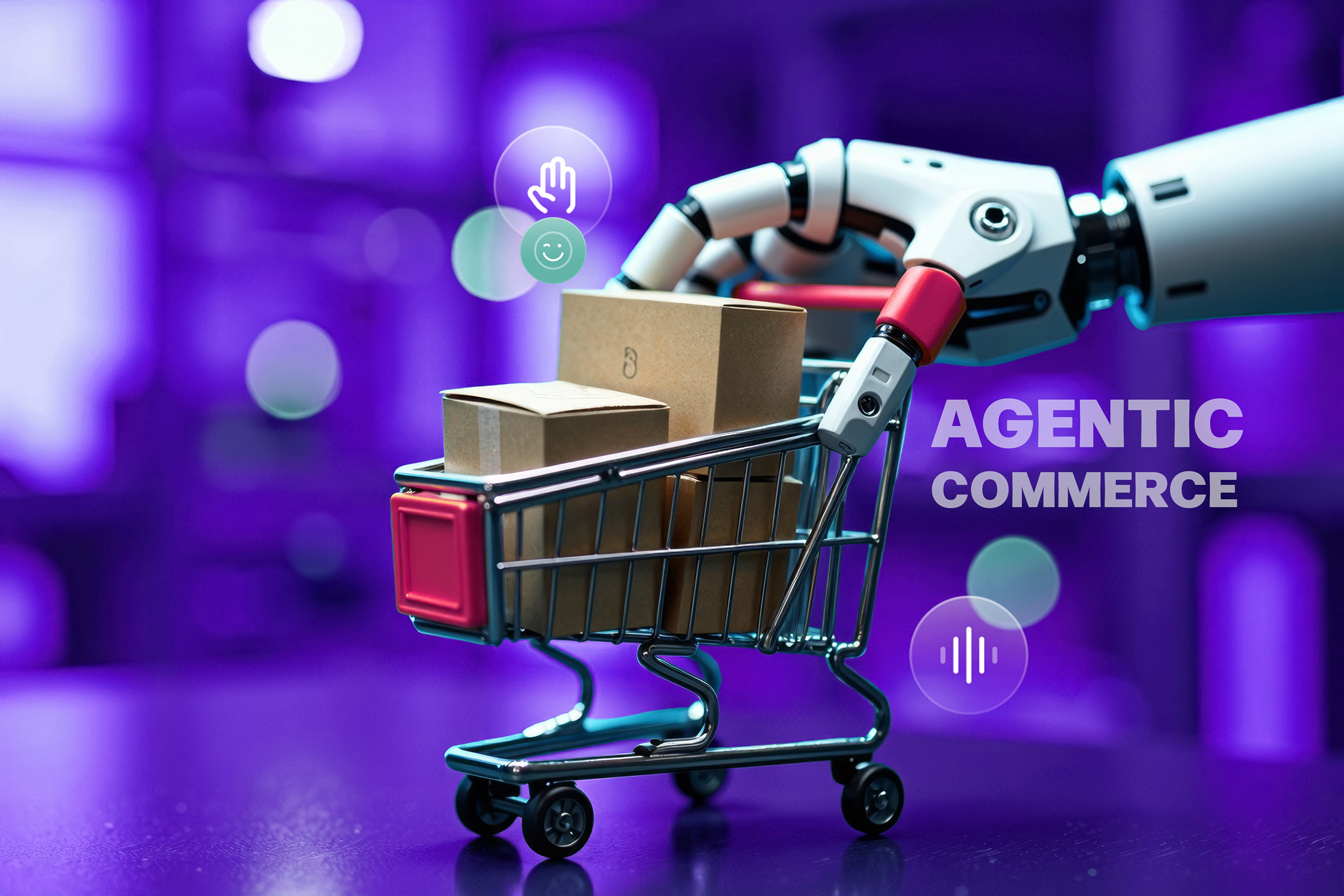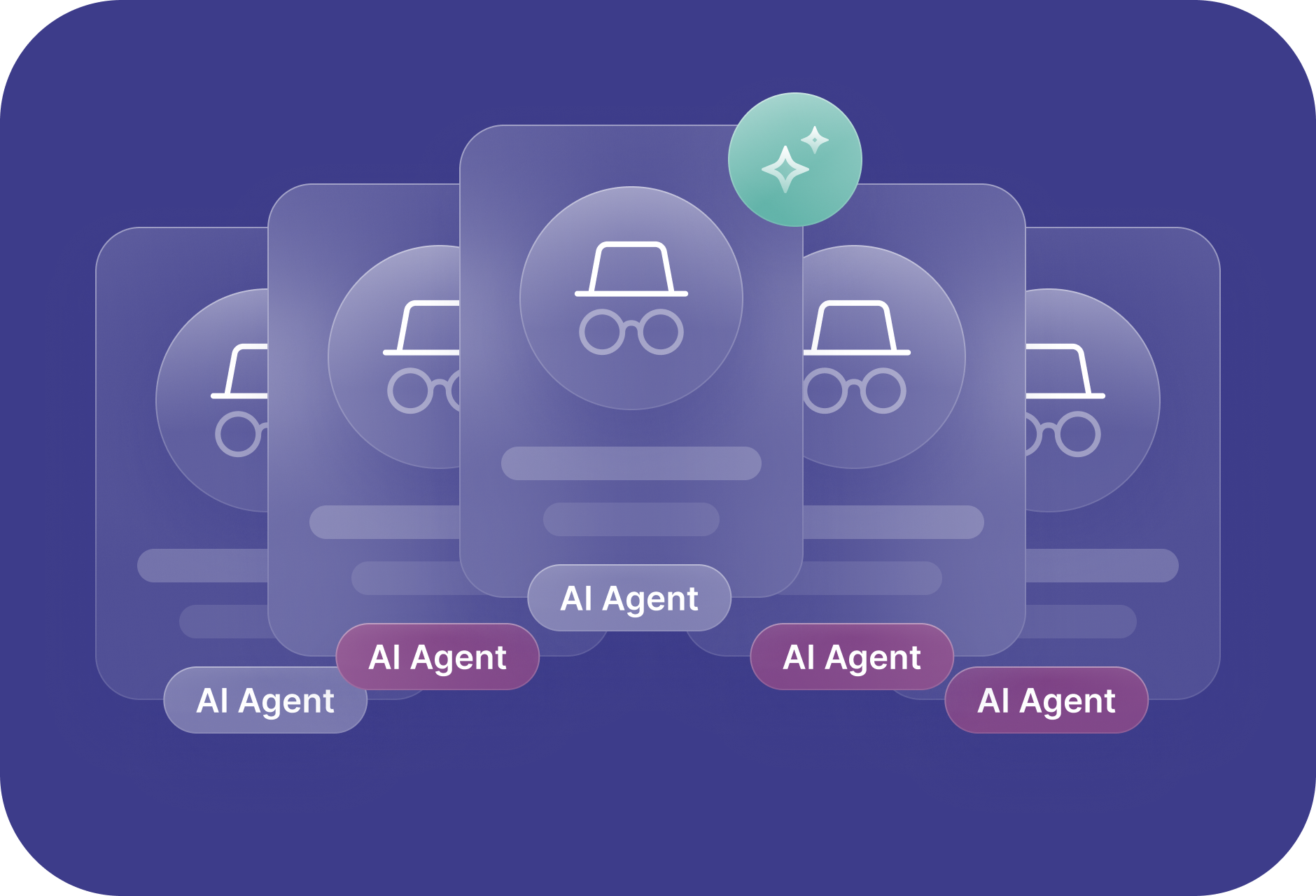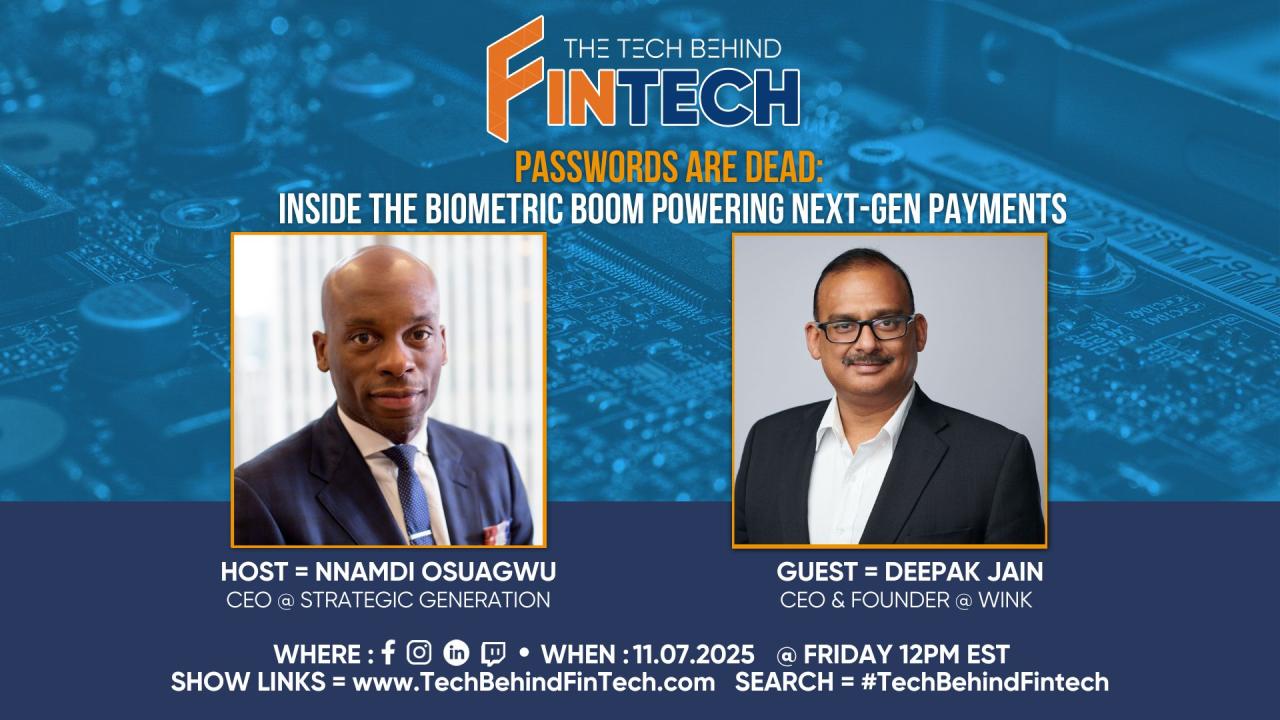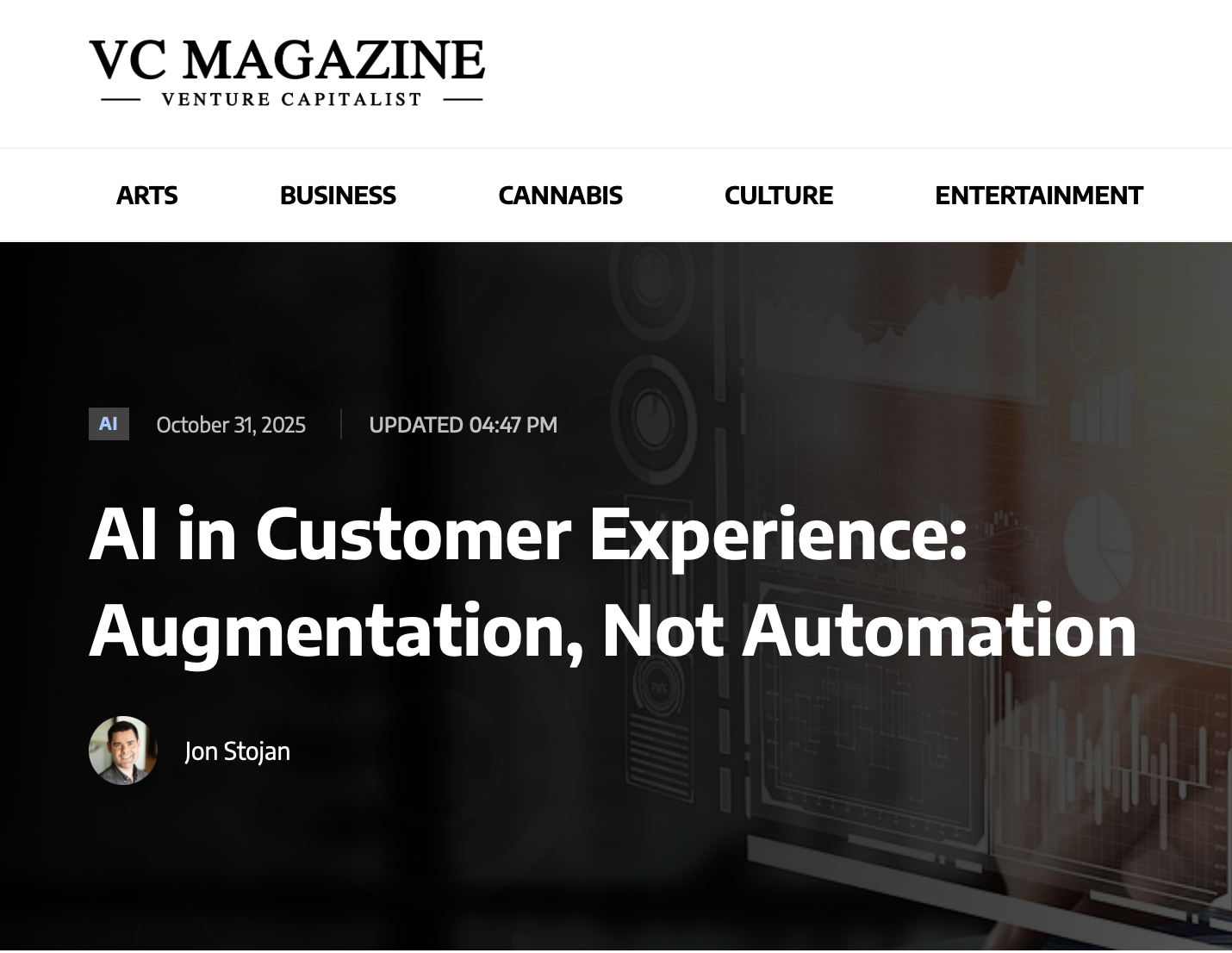Passwords Are Dead: Deepak Jain on the Biometric Future of Commerce
When Your Assistant Doesn’t Just Suggest, It Buys: The Dawn of Agentic Commerce

It starts quietly. You tell your digital assistant, “Find me a treadmill that fits under the guest-room alcove, has a lifetime warranty, and ships this week.”
Within seconds, it filters through inventories, applies your loyalty points, checks shipping windows, and places the order without you ever touching a screen.
That moment captures the shift already underway. The buyer in the next era of commerce won’t always be human. Increasingly, it will be the digital agents we delegate to act on our behalf—searching, comparing, and transacting in real time.
This is the rise of agentic commerce: transactions powered by AI agents rather than human clicks. And it’s happening faster than most merchants realize. McKinsey projects that by 2030, this shift could represent up to a trillion dollars in annual retail spending in the U.S. alone (McKinsey, 2025). Meanwhile, the global market for AI agents is expected to grow from $5.1 billion in 2024 to $47.1 billion by 2030, a 45 percent annual growth rate (Alvarez & Marsal, 2025).
While AI agents redefine buying, the payments industry is rewriting its own infrastructure in parallel. Mastercard plans to phase out manual card entry for e-commerce by 2030 in favor of a one-click, tokenized experience (Mastercard, 2025) and has pledged to reach 100 percent e-commerce tokenization in Europe by 2030 (Mastercard, 2024). Visa is following suit through its Digital Authentication Framework (DAF), shifting toward network tokens that reduce friction and turn every online transaction into a verified, identity-anchored event (Glenbrook Partners, 2025).
In short, the rails of commerce are converging around tokenization, identity, and trust. Together, they form the foundation on which agentic commerce will stand.
“The buyer of the future may not be human—but the trust beneath every transaction will be.”
From Search to Delegation
For two decades, online shopping followed a familiar script: search, browse, buy. That playbook is now breaking. Agents—autonomous, multi-step AI assistants—are already reshaping how decisions and purchases occur. In retail, 43 percent of merchants are piloting agentic AI, and another 53 percent are evaluating it (eMarketer, 2025).
When an agent acts, it must prove who it represents, what intent it carries, and which transaction it is authorized to complete. Every checkout becomes a negotiation of identity, consent, and verification between human, agent, and merchant.
Wink sits precisely at that intersection. As we connect identity, payments, and AI, our role is to help merchants and platforms welcome this new class of buyer without surrendering control or inviting risk.
Two Roads Into the Future
1. The agent goes to the merchant
In theory, this model mirrors human shopping: the agent visits the merchant’s site, logs in, browses, adds to cart, and checks out. In practice, reality is messier.
Most cybersecurity systems can’t yet distinguish between:
- a benign agent acting on behalf of a real customer
- a malicious bot scraping, stuffing, or attempting fraud
The result: legitimate agents often get blocked alongside attackers. Merchants protect themselves, but lose the agentic opportunity because their systems have no way to authenticate “good” automated traffic.
2. The merchant goes to the agent
Because of these blocks, the industry is shifting toward the opposite pattern: merchants feed structured catalogs, pricing and availability directly into AI platforms, allowing agents to search and recommend products without touching the merchant site at all.
This solves one challenge but unleashes another. The purchase surface now lives inside the agent experience, not the merchant’s:
- Merchants lose control of loyalty, couponing, bundles, and upsell flows.
- They lose payment steering levers.
- They lose the chance to influence preferred items or margin-optimized SKUs.
- They risk becoming interchangeable inventory in someone else’s UI.
- Customers may never see merchant-specific promotions that would have saved money or increased LTV.
Merchants fear a future where they own the inventory, fulfillment and risk, but the agent owns the customer.
This is exactly why companies want to bring the checkout moment — and the relationship — back onto their own rails, but with an agent-aware identity and authorization layer that works for both sides. Wink’s role is to make that possible without broadcasting our playbook.
Agentic commerce cannot scale until merchants can confidently say: “We know who this agent is, who they represent, and that this purchase belongs on our platform.”

Trust: The Bridge Between Participation and Protection
Trust is the defining economic resource of agentic commerce. Without proof of identity and authorization, the entire model collapses into fraud risk, liability confusion and chargebacks. With it, merchants can safely participate and capture the upside of agent-driven demand.
Commercial Control: Who owns the transaction?
Merchants want clarity around:
- who owns the customer relationship
- who controls the checkout experience
- who manages loyalty, offers, rewards and upsell
- how payment preferences (cards, wallets, loyalty, buy-now-pay-later) are maintained
- how routing and cost-optimization logic remains in merchant hands
When agents abstract these layers, merchants lose levers that drive margin, retention and lifetime value.
Risk & Liability: Who is responsible when the agent is wrong?
Agentic commerce introduces new liability questions:
- If an agent “hallucinates” and orders the wrong product, who pays?
- If a user disputes a transaction made by their agent, is that a chargeback?
- Who ensures the agent is using a legitimate, merchant-approved payment credential?
- Who enforces risk thresholds, purchase limits, or additional step-up authentication?
- Can a merchant decline an agent-initiated transaction and request re-verification from the human user?
- Can a merchant require biometric confirmation for certain items, categories or dollar amounts?
These are the unsolved pillars of trust in agentic commerce.
Why protocols matter
Visa’s Trusted Agent Protocol (TAP) introduces cryptographic proof that an agent is legitimate (Visa, 2025). Stripe and OpenAI’s Agentic Commerce Protocol (ACP) creates standardized purchase flows (Stripe, 2025). Together, they outline a world where merchants can verify the agent, the human and the credential in one chain of trust.
Early pilots show:
- 6–10% revenue lift,
- up to 40% productivity gains,
- from automated or agent-assisted flows (Grid Dynamics, 2025).
Wink’s role is to provide the connective tissue: identity-anchored authorization, payment control, fraud orchestration and biometrics that create predictable, verifiable trust across every step.
When agents buy, they buy from you, under your rails, with your controls intact.
“Without proof of identity and authorization, the entire model collapses into fraud risk, liability confusion and chargebacks. With it, merchants can safely participate and capture the upside of agent-driven demand."
The Guardrails Are Being Written
In 2025, Basis Theory launched the Agentic Commerce Consortium (ACC) to define frameworks for identity, authorization and safety in agentic ecosystems (Basis Theory, 2025). The goal is to avoid a fragmented, chaotic agent environment by ensuring merchant-controlled flows, not machine-driven opacity.
The gap in most early standards is identity. That’s where Wink contributes. We help define Know Your Agent (KYA) rules that extend Know Your Customer (KYC) into the AI era, ensuring each agent has a verified lineage back to a real user and a real credential.
A2A (Agent-to-Agent) Is the Next Frontier
Much of agentic commerce will not be “agent-to-merchant” but agent-to-agent:
- Procurement agents negotiating with supplier agents
- Shopping agents comparing offers with pricing agents
- Logistics agents coordinating with warehouse and delivery agents
A2A requires identity, intent verification and signed authorization at every step. Wink’s identity primitives and permissioning architecture support exactly this trust fabric.
Why the First Big Wave Will Be B2B
The most immediate transformation won’t be in consumer carts but in enterprise procurement. B2B ecosystems already run on structured catalogs, negotiated contracts, and repeat orders, making them ideal for agentic optimization. Surveys show nearly 60 percent of U.S. enterprises plan to adopt AI agents within the next year (Allganize, 2025).
Picture a retail chain whose facilities agent monitors inventory, orders replacements under pre-approved contracts, schedules shipments, and reconciles invoices. Or a marketing agent that negotiates ad buys across platforms based on live performance data. These aren’t hypothetical—they are the next phase of operational efficiency.
In B2B, identity isn’t optional; it’s foundational. Wink’s biometric authentication, gateway orchestration, and fraud controls enable enterprises to automate safely, preserving visibility and trust while embracing the efficiency of agentic systems.
A Market Moving at Machine Speed
The AI agent market is expected to nearly 10× by 2030, and more than half of companies (51 percent) say they’ve already deployed agentic systems, with another 35 percent planning rollout within two years (PagerDuty, 2025). In e-commerce, adoption will leap from less than one percent today to one-third of enterprises by 2028 (SellersCommerce, 2025).
The question isn’t whether agentic commerce will redefine your business—it’s whether your business will be ready to participate safely when it does.
Lead, Don’t Chase
Every company will soon face a choice: lock the doors, or install better locks.
Wink is building those locks and handing you the keys. We connect the dots between identity, payments, and AI, allowing industries to participate in the agentic commerce economy while mitigating risk and chargebacks from fraud and bad actors.
When digital agents start shopping, you don’t want to be the store that turns them away—or the one that lets in the wrong ones. You want to be the trusted merchant they buy from. Safely. Seamlessly. On your terms.
“Agentic commerce isn’t coming—it’s already here. The question is whether you’re ready to meet your new buyer.”
References
McKinsey (2025); Alvarez & Marsal (2025); eMarketer (2025); Mastercard (2024, 2025); Visa (2025); Stripe (2025); Grid Dynamics (2025); Basis Theory (2025); Allganize (2025); PagerDuty (2025); SellersCommerce (2025); Glenbrook Partners (2025).




